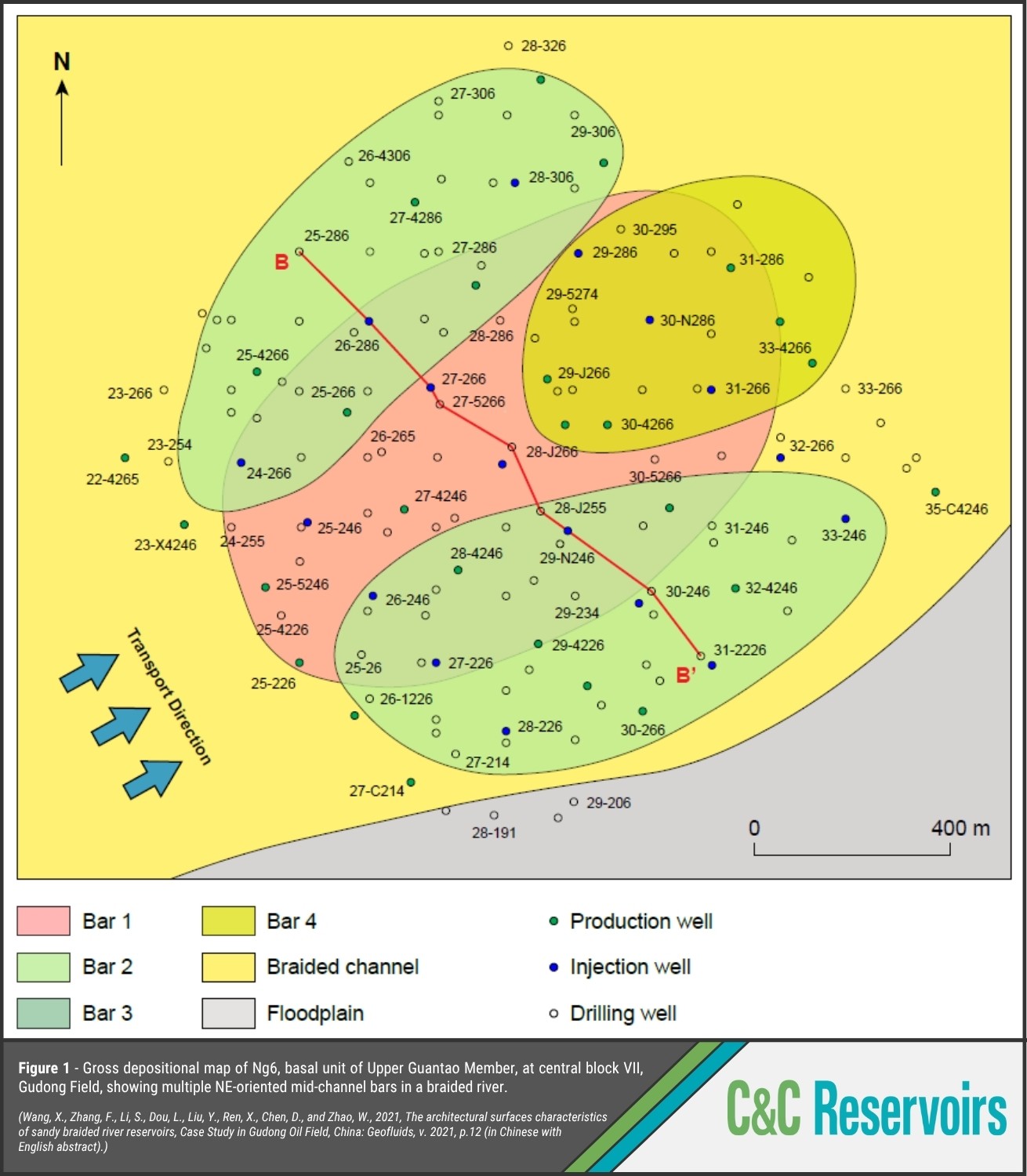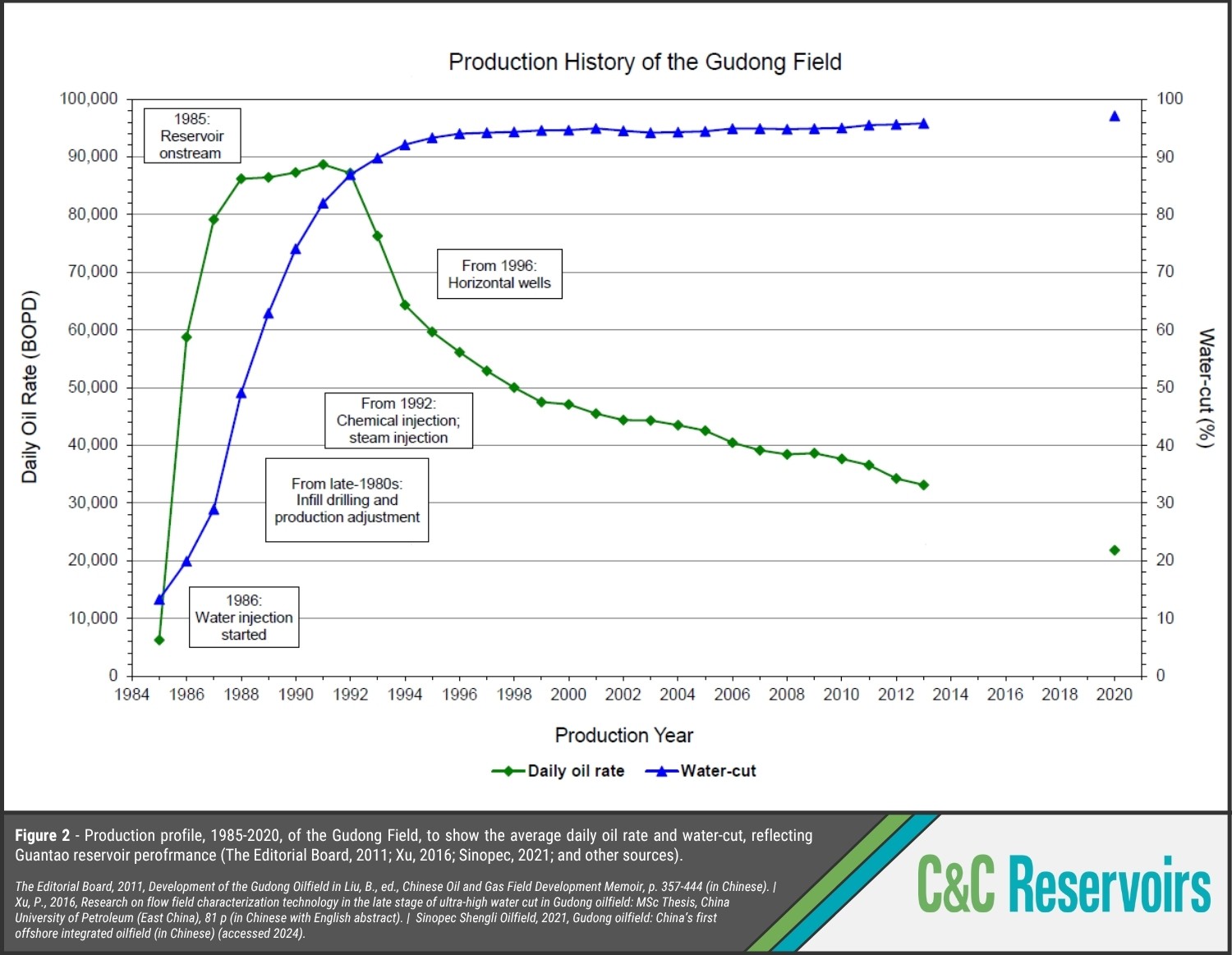The Gudong Field
Analogue Spotlight
Straddling the coast of China’s Bohai Basin is the Gudong Field, home to the Guantao reservoir – a remarkable example of a highly compartmentalised Miocene sandstone. Here, multiple pools stretch across 700 m of braided- and meandering-fluvial channels, trapped within a broad anticline.
Onstream since the mid-1980s, the Guantao reservoir was initially a great success because of extensive water injection. However, this reliance on injection to stimulate production would bring about the field’s rapid degradation. Beginning in 1986, ~80,000 BWPD were being injected via nine injectors and by 1989 those numbers had ballooned to ~180,000 BWPD through 279 injectors, yielding an average of ~87,000 BOPD between 1988 and 1992, ultimately relying on a total of ~500 injectors.
However, in the early 1990s, production began to decline as water-cut continued to rise above 90%, leading the field’s operators to implement a series of enhanced oil recovery (EOR) techniques. Alkaline-surfactant-polymer (ASP) injection, which began in 1992, achieved 13.4% incremental recovery by July 1994 and reduced water-cut from a startling 99% to ~85%. However, despite the headline success of this project, severe scaling and emulsification issues rendered ASP untenable in the long term.
Undeterred, the operators launched two other EOR pilots. The first utilised surfactant-polymer flooding and yielded an initial incremental recovery of ~12%. The second, polymer flooding, yielded an initial incremental recovery of ~7%. Consequently, in the late 1990s, both techniques were deployed fieldwide, yielding an overall incremental recovery of ~5-10% by the late 2000s. Further efforts, such as steam injection, provided an additional 32 MMBO, while infill and horizontal drilling yielded an incremental recovery of ~12%.


